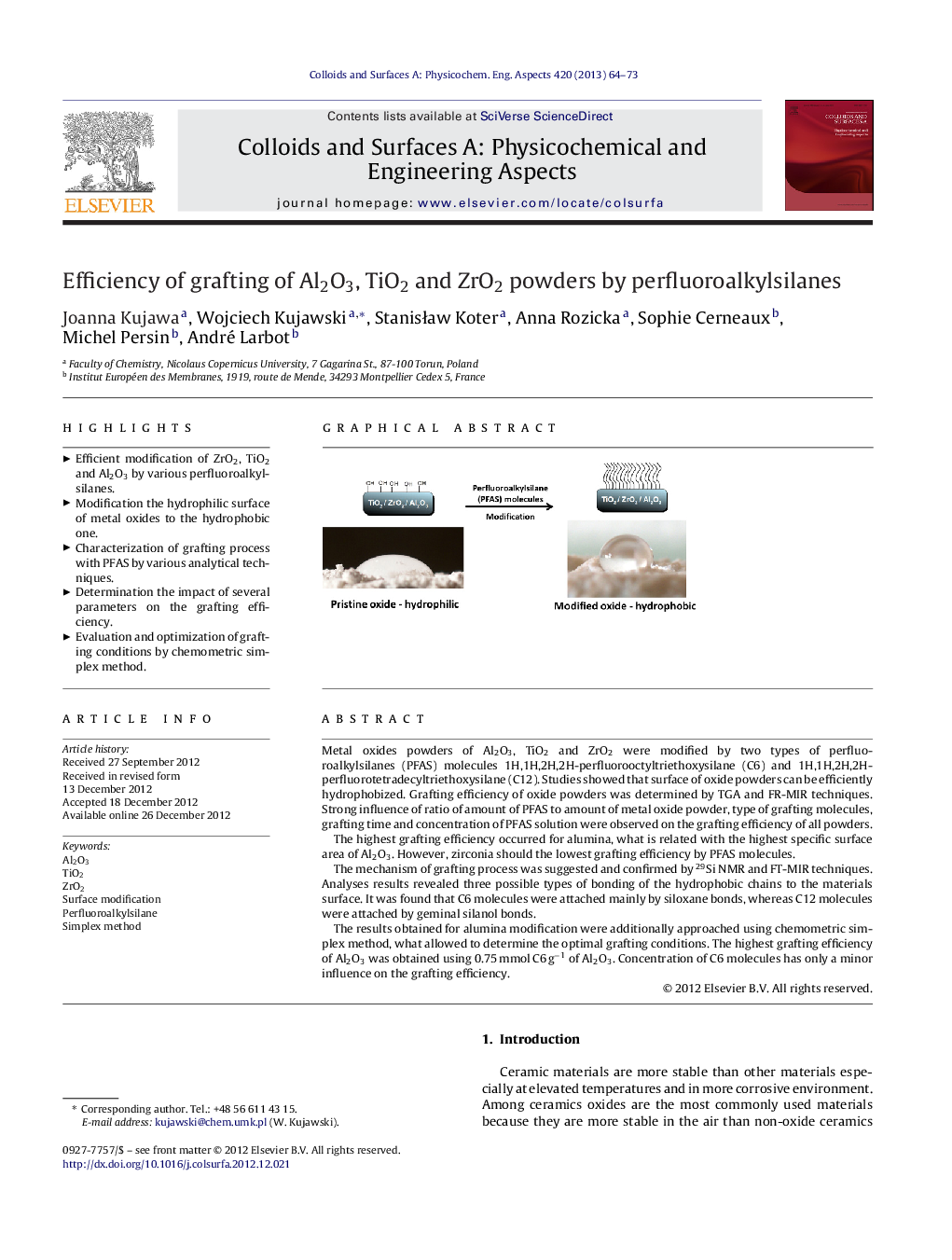| کد مقاله | کد نشریه | سال انتشار | مقاله انگلیسی | نسخه تمام متن |
|---|---|---|---|---|
| 593696 | 1453953 | 2013 | 10 صفحه PDF | دانلود رایگان |

Metal oxides powders of Al2O3, TiO2 and ZrO2 were modified by two types of perfluoroalkylsilanes (PFAS) molecules 1H,1H,2H,2H-perfluorooctyltriethoxysilane (C6) and 1H,1H,2H,2H-perfluorotetradecyltriethoxysilane (C12). Studies showed that surface of oxide powders can be efficiently hydrophobized. Grafting efficiency of oxide powders was determined by TGA and FR-MIR techniques. Strong influence of ratio of amount of PFAS to amount of metal oxide powder, type of grafting molecules, grafting time and concentration of PFAS solution were observed on the grafting efficiency of all powders.The highest grafting efficiency occurred for alumina, what is related with the highest specific surface area of Al2O3. However, zirconia should the lowest grafting efficiency by PFAS molecules.The mechanism of grafting process was suggested and confirmed by 29Si NMR and FT-MIR techniques. Analyses results revealed three possible types of bonding of the hydrophobic chains to the materials surface. It was found that C6 molecules were attached mainly by siloxane bonds, whereas C12 molecules were attached by geminal silanol bonds.The results obtained for alumina modification were additionally approached using chemometric simplex method, what allowed to determine the optimal grafting conditions. The highest grafting efficiency of Al2O3 was obtained using 0.75 mmol C6 g−1 of Al2O3. Concentration of C6 molecules has only a minor influence on the grafting efficiency.
Figure optionsDownload as PowerPoint slideHighlights
► Efficient modification of ZrO2, TiO2 and Al2O3 by various perfluoroalkylsilanes.
► Modification the hydrophilic surface of metal oxides to the hydrophobic one.
► Characterization of grafting process with PFAS by various analytical techniques.
► Determination the impact of several parameters on the grafting efficiency.
► Evaluation and optimization of grafting conditions by chemometric simplex method.
Journal: Colloids and Surfaces A: Physicochemical and Engineering Aspects - Volume 420, 5 March 2013, Pages 64–73